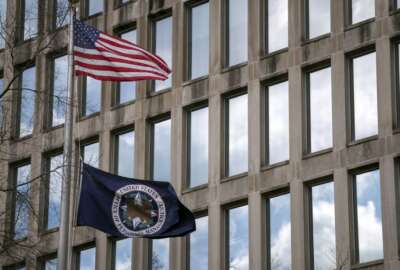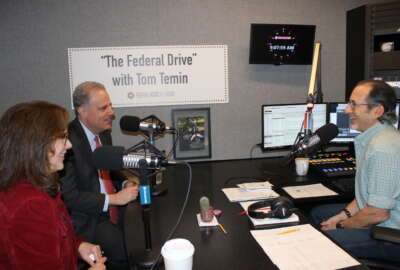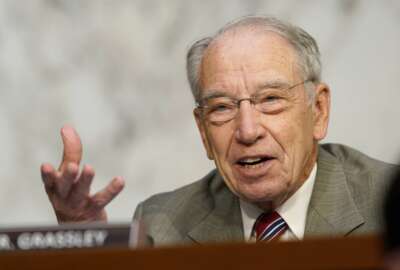Hubbard Radio Washington DC, LLC. All rights reserved. This website is not intended for users located within the European Economic Area.
On Air: Federal News Network
Trending:
Telework rate jumps as agencies take advantage of new law, guidance
Federal News Radio believes the administration has effectively complied with the law and demonstrated real progress by increasing the use of telework. The admin...
wfedstaff | April 17, 2015 4:08 pm

Less than two years after President Obama signed the Telework Enhancement Act, the use of telework has spread and now one quarter of all eligible federal employees work outside the office at least one day a week.
In comparison, just 10 percent of the eligible workforce reported teleworking in 2009, the last year of data available before the law was signed in late 2010. In its annual telework reports to Congress, the Office of Personnel Management says that 113, 946 federal employees teleworked in 2009. That number jumped to 168,558 in September 2011.
| Why telework was rated effective | |
| Reason #1: OPM issues new guidance and advice for agencies to comply with the Telework Enhancement Act
Reason #2: Telework tracking becomes automated, eliminating voluntary reporting and creating baseline for measuring effects of telework in the future Reason #3: Number of federal teleworkers hits all-time high (More primary source material available on The Obama Impact record-keeping to better understand who is using the option and how it is working, which is required by the law. And the Office of Personnel Management complied with the law by releasing guidance and advice to agencies. The rating is part of Federal News Radio’s special report, The Obama Impact: Evaluating the Last Four Years. Throughout the series, Federal News Radio examines 23 different ideas and initiatives instituted by the Obama Administration and ranks them as effective, ineffective and more progress needed. George Jakabcin, chief information officer for the Treasury Inspector General for Tax Administration, tells In-Depth with Francis Rose that the administration’s push for more agencies to embrace telework validates TIGTA’s program and proves the agency was on the right track. “We view this as a positive step,” he said of the law and the White House’s efforts. “And we’re happy to be one of the folks that happened to be out in front of the wave, setting the example.” TIGTA began its telework program in 2000 and today more than 86 percent of its employees are eligible to work remotely. Half of those workers telework at least two days a week, Jakabcin said. The program has also allowed TIGTA to hang on to employees who may have otherwise retired and its served as a good recruitment tool because employees like the flexibility to work from home, Jakabcin said. “Anytime you can hold on to your workforce in a situation where many of those people may take advantage of their earned right to retirement, it’s a plus for us. It’s a plus for the American taxpayer as well,” he said.
TITGA addressed management hurdles head on. Executive-level officials bought into the concept from the beginning. And the agency offered training to help managers switch from being able to observe their employees working to focusing on the outcomes of that work. “That has been the biggest hurdle for any organization to overcome in terms of the mindset of both the employee and management,” Jakabcin said. ” ‘If i can’t see you, I can’t manage you.’ That’s not the case. You need to focus on the results and the rest will follow from that.” Technology and computer equipment is often cited as a barrier to allowing telework. But TITGA provides the laptops, monitors, keyboards and mice that workers use and the workers are responsible for providing the internet connection from their homes. They have access to the same tools as if they were working in the office, he said. The agency has added networking tools like video conferencing, instant message services, and whiteboards to keep employees working remotely in touch with each other and with the home office. “It also helps to break down the culture shock and social barriers to telework. If i can see people and I can interact with them as opposed to hearing that disembodied voice over the phone, it makes the experience that much richer, and that much more positive,” he said. More from the special report, The Obama Impact: Evaluating the Last Four Years Part 1: Evaluating the Obama administration’s management initiatives Part 2: Evaluating Obama’s technology reforms Part 3: Evaluating Obama’s workforce initiatives Part 4: Evaluating Obama’s acquisition efforts Part 5A: What would a second-term for President Obama mean for feds? Part 5B: What would a Romney presidency mean for federal workers? Copyright © 2024 Federal News Network. All rights reserved. This website is not intended for users located within the European Economic Area.
Related Topics
Top Stories |




